Daisies provide a delicate, multi-coloured and spectacular impression on the seemingly harsh and dry looking bush areas of Western Australia (WA). Growing everlastings and other colourful daisies for your own spring show is guaranteed to bring great pleasure and satisfaction.
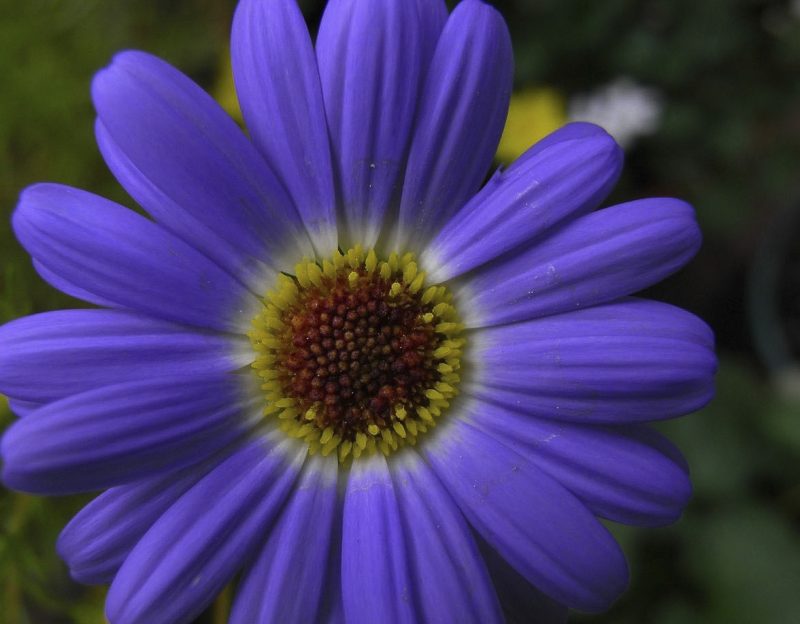
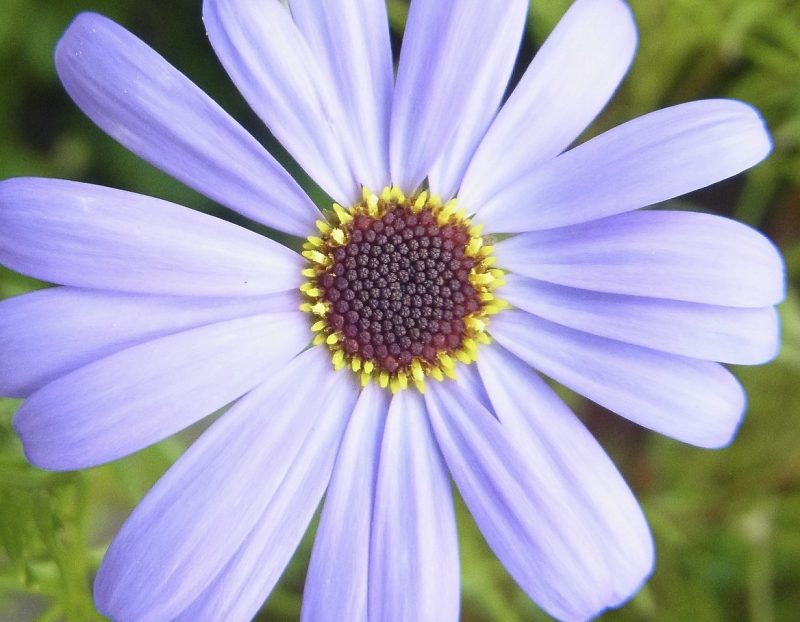
In our first two articles, we shared with you the different kinds of daisies in Western Australia. Now we explore how to get maximum impact in your garden using stunning WA daisies!
Using native daisies in mass plantings
The most common everlasting species, Rhodanthe chlorocephala subspecies rosea, is familiar to most with the mass displays at Kings Park Botanic Garden each spring. Mixed shades of pinks and white, some with black centres, always draw admiration and interest from the visitors.
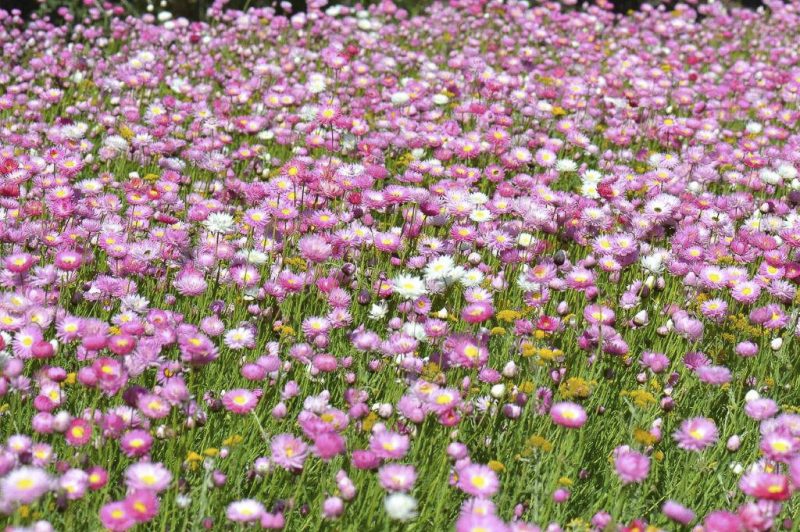
These mass displays of fields of flowers seen during spring here and encountered in the bush are able to be recreated to some extent in the home garden and still provide a spectacle. So how do you get started?
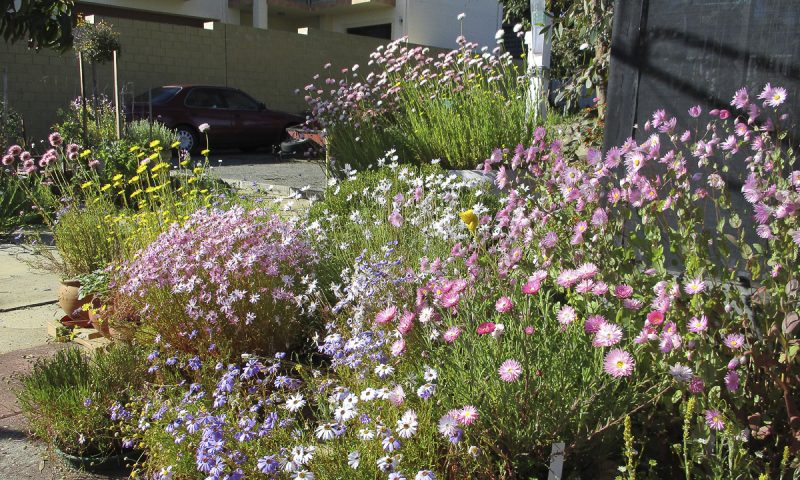
1. When to plant WA native daisies – plan for an April/May planting
Seeds need to be planted soon after first rains in mid to late April/early May in Australia. The old adage of planting after Anzac Day is a good one. The germination of everlastings is governed by access to light, moist soil for more than three days and well-ripened seed.

Seeds planted mid-April usually start flowering in July with longer flowering species, such as Brachyscome, continuing into late spring and early summer. Late planted crops, though shorter and less vigorous, still provide a colourful display.
Daisies grown as a decorative field need to be selected to give each species its own room to provide the scattered colourful effect. See the end of this article for suggestions of daisies by height and colour for the different effects you’d like to create.
2. Where to source native daisy seed
The common everlasting (for example, Rhodanthe, Schoenia, Lawrencella and Cephalipterum) with their white silky seed is available at most nurseries and seed packets suppliers. Further species of interest are available from the Eastern Hills Branch of the Wildflower Society of WA, Nindethana Seed Supply, Natural Regeneration Australia, Australian Wildflower Seeds and others.
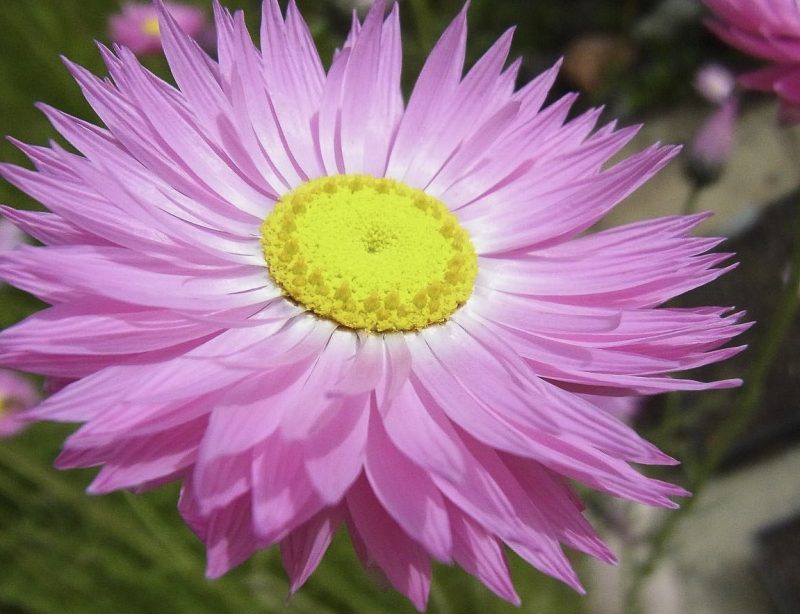

Another option is seed collection…
Collecting Western Australian native daisy seed
Most areas have their own annual daisies. Though the main regions are in the drier areas of WA, there are many species of interest throughout the forests of the wetter south west areas.
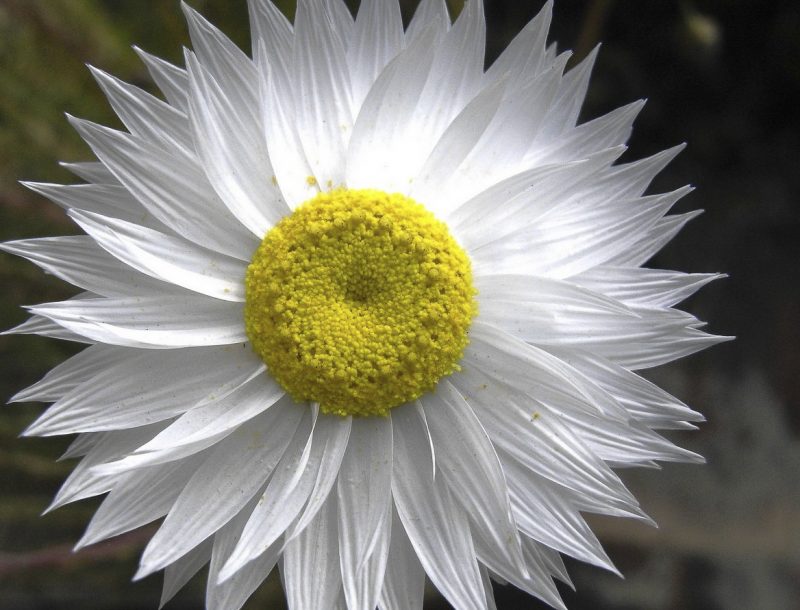
A Hobby License is available from the Western Australian Department of Parks and Wildlife Licensing Office to collect small amounts of seed from the wild.
Collect carefully a few of the oldest spent flower heads on still flowering plants. There are already a few mature seeds in them because of the inbuilt need for the annuals to reproduce themselves quickly if rain does not occur in the wild.
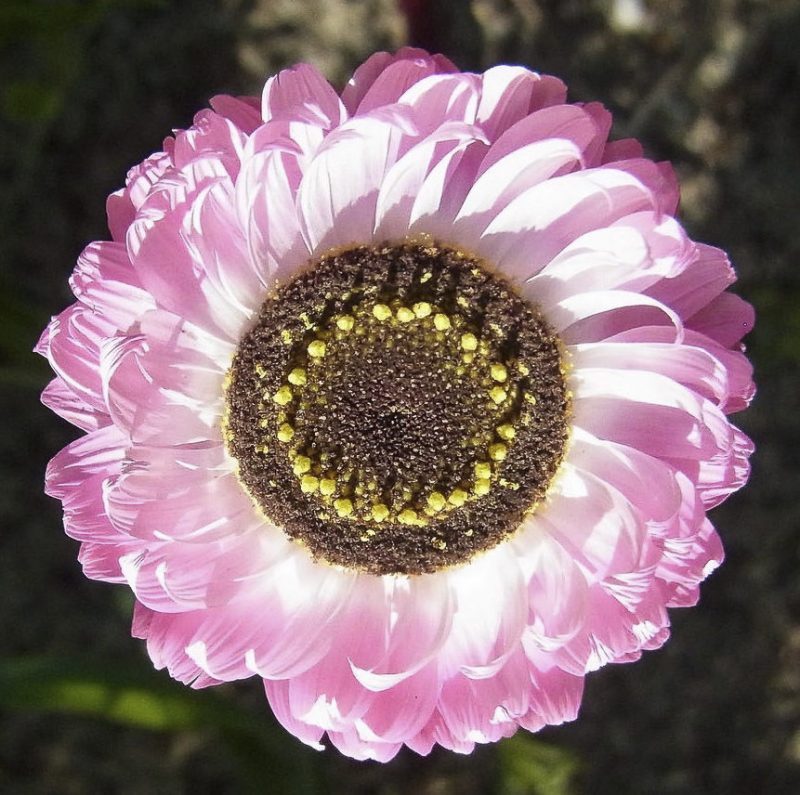
Daisies disperse their seed very quickly when mature so diligence is required to be there within a week or two of the end flowering, especially as temperatures rise in early summer. Seed is ready to be collected when the outer rays have pulled away from central circle of each flower head. Collect the seed in plastic shopping bags with the top loosely tied, or open paper bags or containers to prevent collected seed heads from going mouldy.
Once you have grown your mixed-colour crops, there is an opportunity to collect your seed each season and to select, and mark individual colours such as pure whites, deep pinks, other shades of pink, curly petals, fluffy flowers and flower sizes. These can be used as special features in pot plants for the next season while providing an ongoing seed supply.
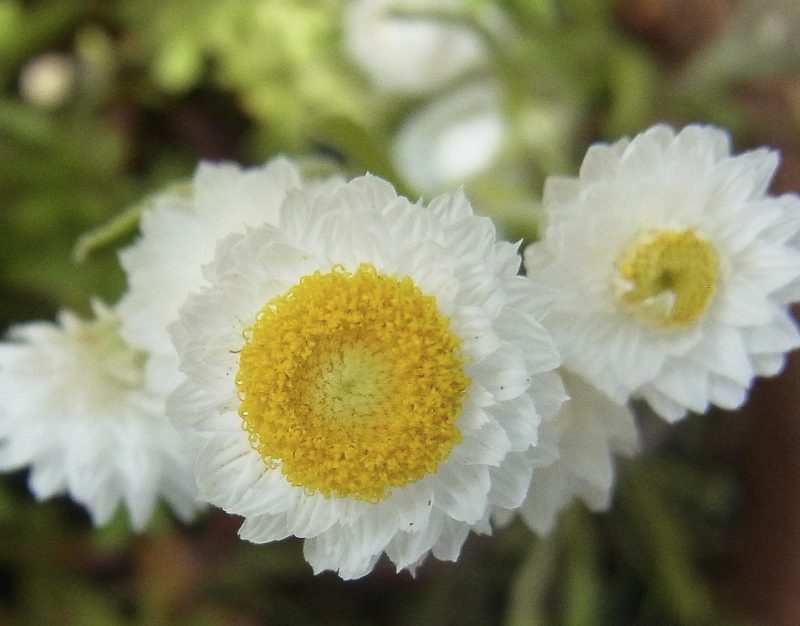
3. Native daisy seed preparation and cleaning
If you have collected your own seed, ensure that you fluff up the seed heads every couple of days to dry them quickly and so the heads fall apart.
The shape and size of the seed varies with the species. So seed cleaning can be a very educative experience where you can marvel at all the different shapes, patterns, and seed dispersal methods you will be confronted with.
The seed, once defined, can be separated from all the other flower parts in which they have developed or spread all together when sowing.
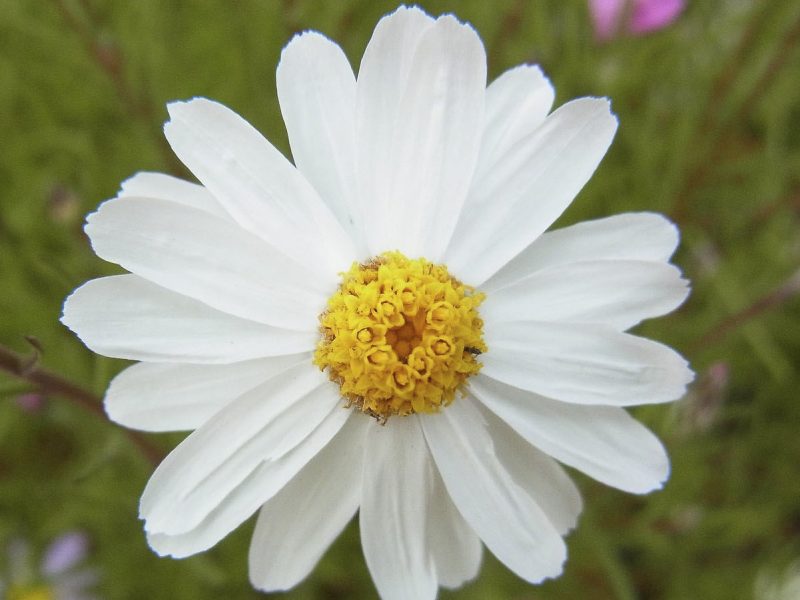
4. How to prepare gardens beds before planting your native daisies
Any size garden bed can be chosen. Make sure the area is free of weeds. Deal with weed germination after the first rains and before seeding either by the turning surface soil over or spraying with glyphosate which has a couple of weeks’ working time.
Fertiliser and soil additives are optional and really unnecessary. When grown en masse, the plants need to be able to hold themselves upright. If planted too thickly, the plants will become too lush and heavy and lean over on each other and collapse when watered or rained on.
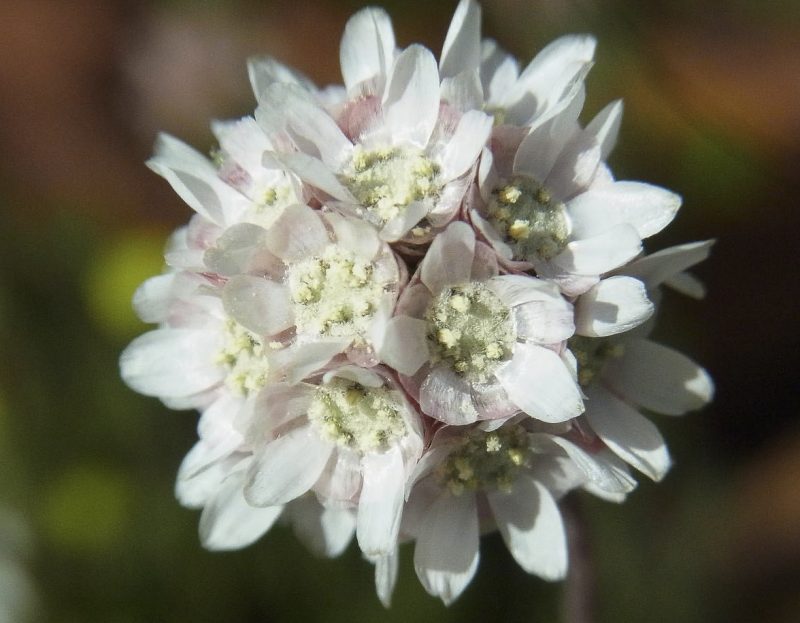
5. How to plant seed of native Western Australian daisies
When the bed is ready, rake the planting area to create an uneven surface to prevent the seed from blowing away in wind. Spread the seed evenly but sparingly over surface. In an existing or newly planted garden bed, the seed should be sown more in open designated spaces and not close to other plants as they can become smothering, especially to newly planted plants. Small seed can be mixed with some soil for even spreading.
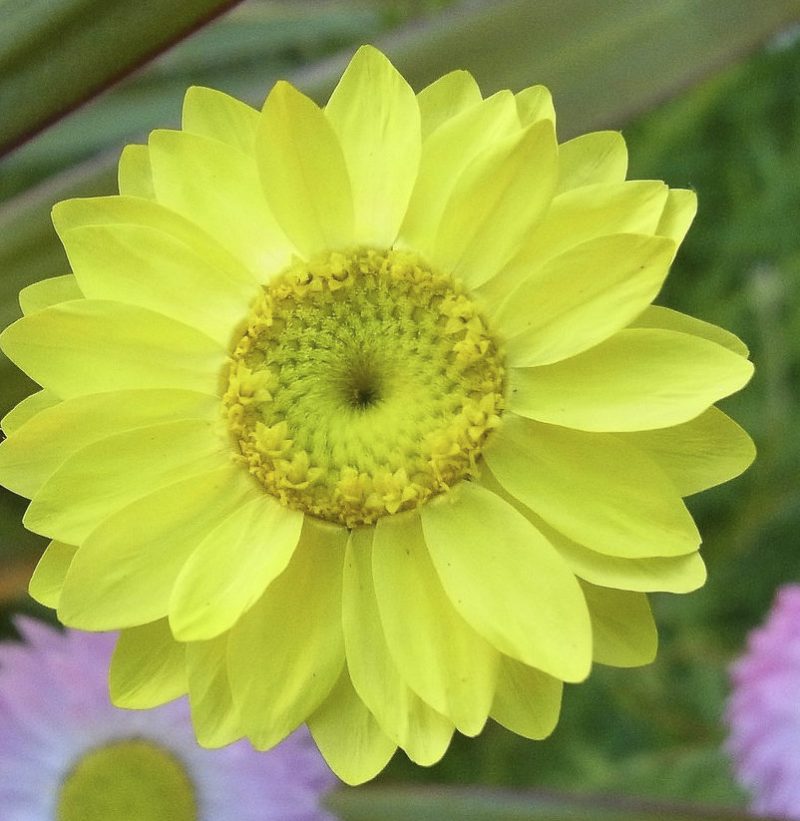
Rake over again very lightly and water with a spray head to stabilise the seed. Depending on rainfall, further watering is only necessary if dry periods occur during and after germination until the plants are established. Once growing well, natural rainfall should be sufficient.
Any weeds which may still appear are best to be removed with therapeutic hand weeding where possible. This is done early so as not to disturb the growing daisies. Once sown, a watering with smoke water solution will encourage germination of a greater range of species sown.
The growing plants standing straight can be lightly trimmed or tip pruned anytime up to around 10cm tall to increase flowering buds. After the tips turn downwards, it is too late as the flower heads are forming.
6. Planting native daisies in pots
Daises do well in pots and provide masses of spring colour. The pots can be used for individual species or mixed species creating mini ecosystems in a pot.
There are also wonderful novelty species with mysterious shapes and forms which make great pot plants for creative children, such as Actinobole uglinosum, Chthonocephalus pseudevax and Siloxerus filifolius.
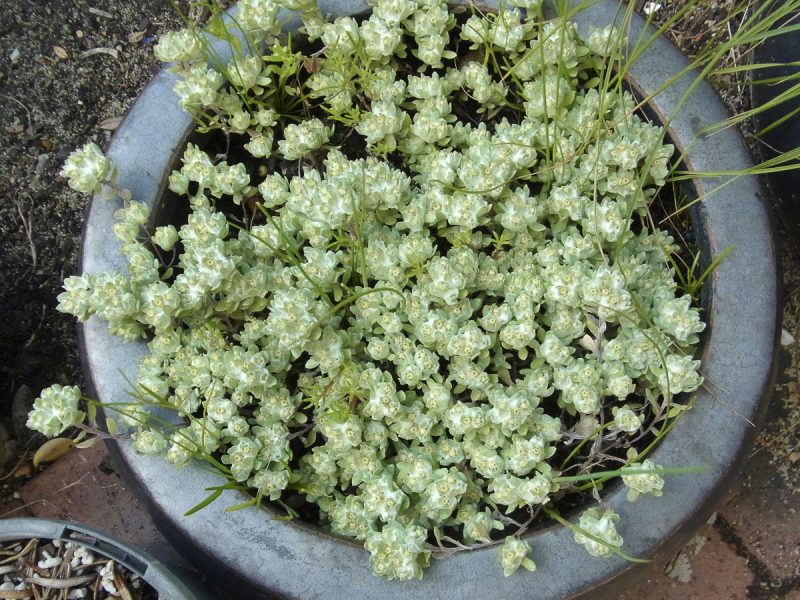
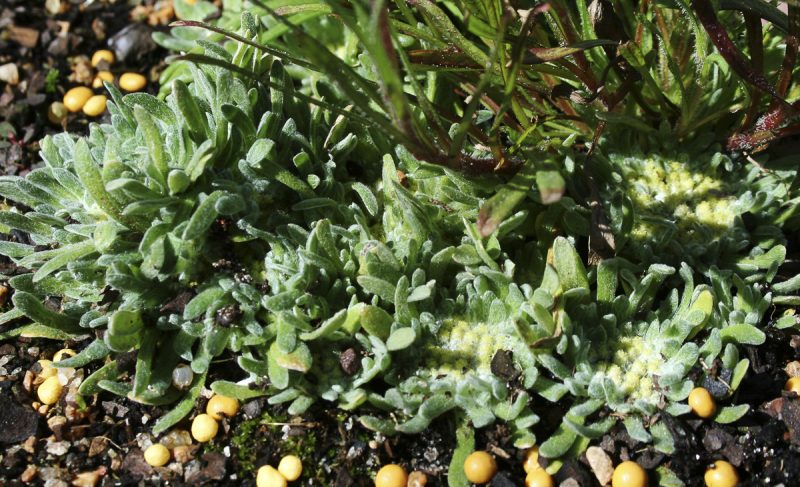
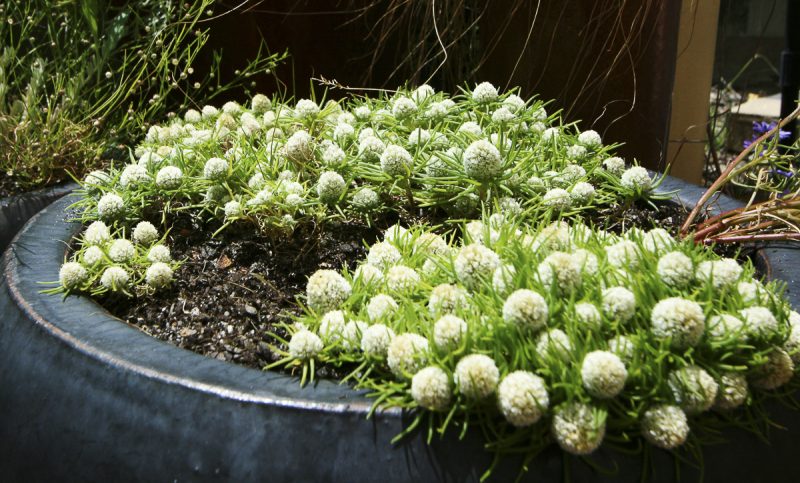
A top quality potting mix is best for pot culture. The daises often grow more vigorously in a pot due to the richer soil mix and shelter from the elements.
The size of the pots depends on the length of the daisy species stems. Select pots to balance the size of final plant growth, which maybe up to 20cm to 30cm or taller, for a collection of species.
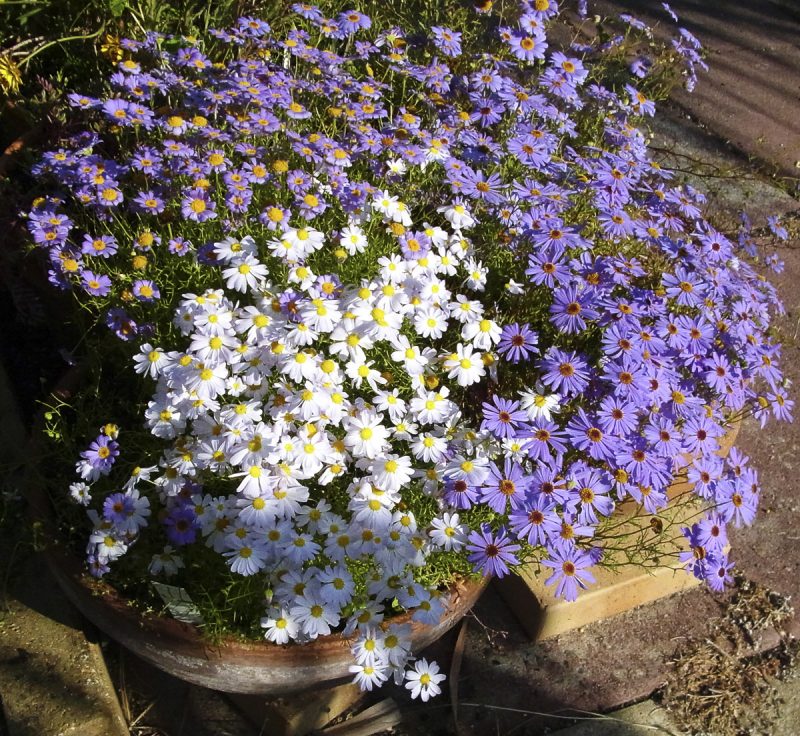

Small seed is scattered, not too densely, over the surface, to prevent mature plants growing too lush and overflowing the pots. A light scattering of soil over the seed will stabilize it on the surface. Water in lightly.
Pots may be placed on saucers to keep water available as necessary during dry winter spells. Place in full sun position, away from any excess wind. Turn pots occasionally.
7. Dealing with native daisy pests
Snails! It is always worth doing a snail kill at least twice in the two weeks before planting seed. Devise your own methods of exterminating them.
Check for aphids on forming buds, caterpillars eating young plants and forming buds, and cutworms chewing off small new seedlings.
Water spray may dislodge aphids, and caterpillars and cut worms can be collected if searched for.
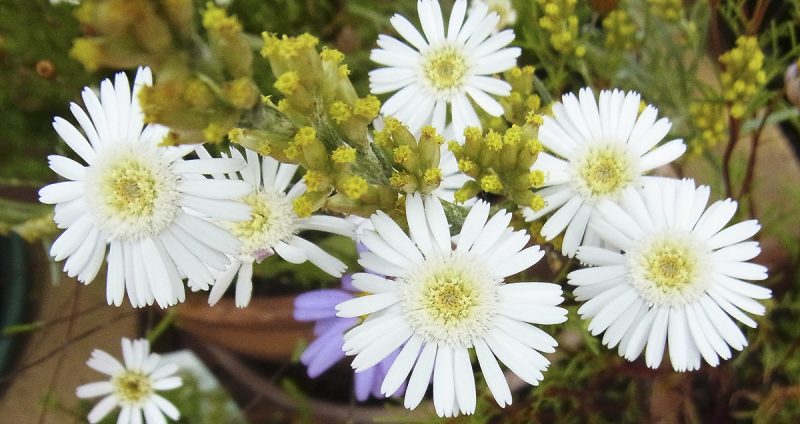
Designing your garden with Western Australian daisies – what to plant where
Here is a sample selection of different plants by height and colour for your mass planted gardens and pots.
Taller species to 1m
Xerochrysum bracteatum – yellow and white
Taller species to 80cm
Rhodanthe chlorocephala subspecies rosea – pink and white
Schoenia filifolia subspecies subulifolia – large flowered yellow
Podolepis aristata – yellow
Species around 30cm
Angianthus tomentosum – yellow
Brachyscome iberidifolia – blue, purple, mauve, white
Cephalipterum drummondii – white, yellow
Craspedia variabilis – yellow
Lawrencella rosea – pink
Lawrencella davenportii – pink, white
Gnephosis tenuissima – yellow
Podolepis capillaris – white Gypsophila like
Podotheca chrysanatha – yellow
Rhodanthe manglesii – pink, white
Rhodanthe spicata – white
Roebuckiella ciliocarpa – mauve
Schoenia cassiniana – pink
Waitzia acuminata – yellow
Waitzia albicans – white or pink
Species around 10cm
Bellida graminea – pink
Hyalosperma cotula – white
Hyalosperma glutinosum subsp venustum – yellow
Podolepis lessonii – yellow
Pterochaeta paniculata – yellow
Rhodanthe rubella – deep pink/red
Schoenia filifolia subspecies filifolia – yellow
Compact ground covers
Actinobole uliginosum – explosive seed release
Chthonocephalus pseudevax – flat yellow platelets
Pogonolepis muelleriana – yellow
Siloxerus filifolius – white
Jim Barrow and Hazel E. Dempster
About the authors
Jim Barrow and Hazel E. Dempster are members of the Wildflower Society of Western Australia. The Wildflower Society uses independent technical knowledge of WA’s wildflowers to help students, gardeners, professionals and families better know, grow, enjoy and conserve the wildflowers of Western Australia.
Jim worked for CSIRO for 40 years, “retiring” as a Chief Research Scientist in 1992. Since then, he has continued his scientific work, publishing more than 40 scientific papers since “retiring”. He also devoted time to his wildflower interests. He is a past president of the Wildflower Society of WA.
Hazel’s life-long interest in wildflowers, including 20 years in the nursery industry, has given her an encyclopaedic knowledge of WA plants and their cultivation and propagation. She is a Life Member of the Wildflower Society of WA and recipient of the Australian Plants Award in 2013.
[Photos by Jim Barrow, Hazel Dempster and Bill Dempster]

